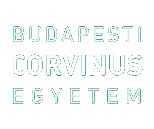Lőrincz, Noémi Szilvia (2022) Value creation of the automotive manufacturing industry in Hungary within global value chains Analyzing key suppliers. Doktori (PhD) értekezés, Budapesti Corvinus Egyetem, Gazdálkodástani Doktori Iskola. DOI https://doi.org/10.14267/phd.2022061
Teljes szöveg
|
PDF : (dissertation)
2MB | |
|
PDF : (draft in English)
254kB | |
|
PDF : (az értekezés tézisei magyar nyelven)
274kB |
Hivatalos URL: https://doi.org/10.14267/phd.2022061
Kivonat, rövid leírás
The purpose of the thesis is to analyze how the automotive manufacturing companies being active in Hungary operate in global value chains, with a particular focus on suppliers. Although the topic of GVC is widespread and discussed in international literature, there is a gap in relation to the Hungarian automotive manufacturing industry, especially in the current situation when the COVID-19 pandemic affects the operation of the multinational enterprises. The main identified research question is the following: What is the value creation of the automotive manufacturing industry in Hungary within global value chain? The research process started with a comprehensive literature review and theoretical background analysis about the GVC concept (including the introduction of ‘Smile-curve’) and FDI investment in Central and Eastern Europe (including the characterization of near-shoring activities) and continued with conducting a sample survey and semi-structured interviews with the key car parts suppliers. Executive board, managerial level and engineers were the target persons both for the survey and for interviews. Based on the literature review, I formulated two hypotheses: 1. The theory of ‘Smile curve’ is also valid in case of the Hungarian automotive manufacturing industry, typically low value-added production processes take place in the country. 2. In addition to the central location, the cheap and skilled Hungarian labour was the most important factor in the near-shoring activities of multinational companies expanding to Hungary. In order to be able to accept or reject the first hypothesis about the relevance of the so called ‘Smile curve’ in the Hungarian automotive manufacturing industry, to define position of the automotive manufacturer companies being active in Hungary in the global automotive manufacturing value chain and to create an in-depth understanding about investment incentives of the Western European firms in the country, I prepared an online survey. To test my second hypothesis about the reasons of near-shoring activity in Hungary, I conducted 3 interviews with industry experts from TIER 1 companies of different size. The targeted automotive parts manufacturers are all suppliers of the 5 OEMs present in Hungary (Audi, BMW, Mercedes, Opel and Suzuki) among others. The new results of the doctoral dissertation are the following: I can reject the first hypothesis about the relevance of ‘Smile curve’ in the Hungarian automotive manufacturing industry, because beside manufacturing activities with low added value typically, also research and development activities take place at bigger multinational companies with higher added value. I can accept the second hypothesis about near-shoring in Hungary, because beside the ‘proximity to export markets’, the cheap but skilled labour was decisive when multinationals decided to invest in the country. The ‘positive support system’, ‘favourable tax conditions’, ‘government policy’ and ‘proximity to HQ’ were aspects that companies used, but they are rather neutral factors. The ‘good infrastructure’ is not so good in the real life and the ‘cheap raw material’ is not cheap, because firms have to deal with world market prices, thus, these were not attractive to investors. Further results about the business operations of the analyzed supplier companies: The purchasing decisions for the Hungarian production happens locally decisively, either independently or with involving the headquarter. The manufactured products are typically drive chains, body parts and electric sensors and the proportion of products designated by OEMs is rather high. Western Europe is the biggest export market of the companies analysed, followed by China, North-America and the Central Eastern European region. Relocation processes are not characteristic of the firms. If so, only from other country to Hungary and it is also determined by OEMs providing new opportunities for them. In some cases, wage costs and logistics also play a role in the relocation process. Electromobility and autonomous driving are the most affecting trends in the automotive manufacturing industry. The semiconductor shortage as a serious downside risk is also the result of the pandemic. The effects of COVID-19 are becoming less pronounced today, but the semiconductor crisis is continuing. Favourable tax conditions and higher value added are the success criteria that will help the Hungarian automotive manufacturing industry to remain competitive in the future. Professional trainings, more support for SMEs and favourable legal conditions are also important aspects. Today, the CEE region, including Hungary is a net exporter of knowledge-intensive goods. To improve its global competitiveness and to be able to move into higher-value-added goods and services, the region should invest more in R&D, infrastructure, education and collaboration between companies and universities. The key players in the automotive part manufacturing has realized that value added is a very important factor in the success of an industry and it can be increased due to investment in research and development and innovation. As revealed by the research, they have already established R&D centers and joint projects with universities (e.g. departments), so companies are well on their way to producing higher added value.
| Tétel típusa: | Disszertáció (Doktori (PhD) értekezés) |
|---|---|
| Témavezető: | Balaton Károly |
| Tárgy: | Regionális gazdaság Közgazdasági elméletek Közlekedés, távközlés |
| Azonosító kód: | 1216 |
| Védés dátuma: | 6 október 2022 |
| DOI: | https://doi.org/10.14267/phd.2022061 |
| Elhelyezés dátuma: | 25 Apr 2022 13:46 |
| Last Modified: | 28 Nov 2022 10:37 |
Csak a repozitórium munkatársainak: tétel módosító lap

 Letöltési statisztika
Letöltési statisztika Letöltési statisztika
Letöltési statisztika